Accelerating inflation, reaching levels unseen in several decades, has been a global concern for months now. The latest data from the UK’s Office for National Statistics showed annual consumer price inflation in the country had surged to 10.1% in July 2022, from 9.4% in June. The rate for July is the highest one since February 1982. The CPI inflation was mostly driven by a 20.0% increase in cost of housing & utilities, a 12.6% rise in cost of food & non-alcoholic beverages as well as by an 8.9% increase in cost of restaurants & hotels.
In light of the price increase of all consumer goods and services, Tradingpedia’s editorial team decided to compare the prices of some of the most common grocery items in August 2022 with the pre-pandemic prices in August 2019.
To do this, we analyzed 55 grocery items available at Tesco by using the web archive tool, which allowed us to see the price levels back in August 2019. After that, we calculated the percentage of increase in prices of those 55 products and compared it with the percentage of increase in average weekly earnings of all employees in the UK by using the latest data available. This way, we obtained an idea of how the consumers’ purchasing power has changed over the three-year period between August 2019 and August 2022.
The grocery items we selected for our analysis belong to 9 different categories according to the Tesco categorisation:
- Bakery
- Meat & Seafood
- Fruits and Vegetables
- Beverages
- Condiments
- Dairy & Eggs
- Canned Foods
- Frozen Food
- Crisps, Snacks, Nuts & Popcorn
Look at the results of our price comparison study below:

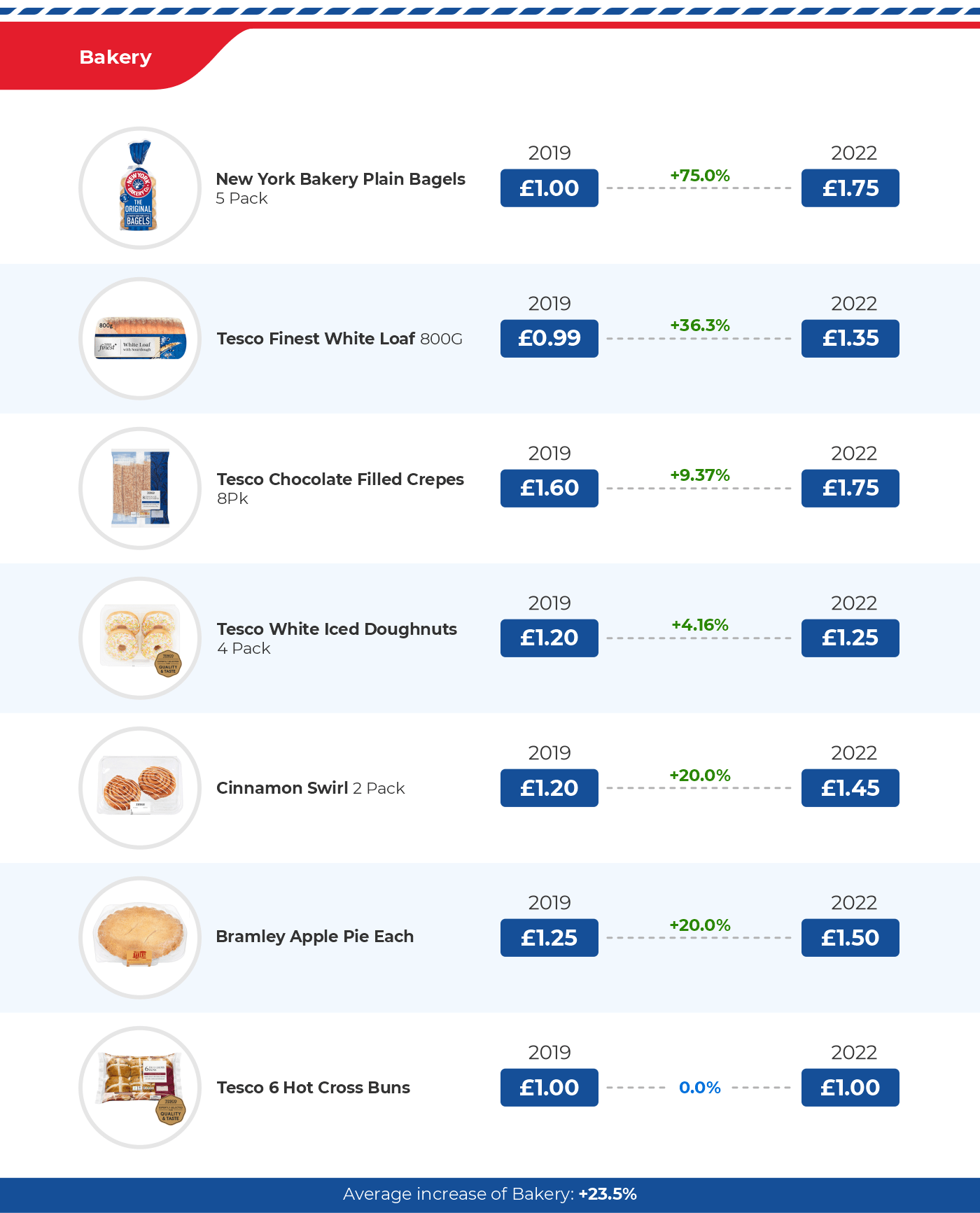
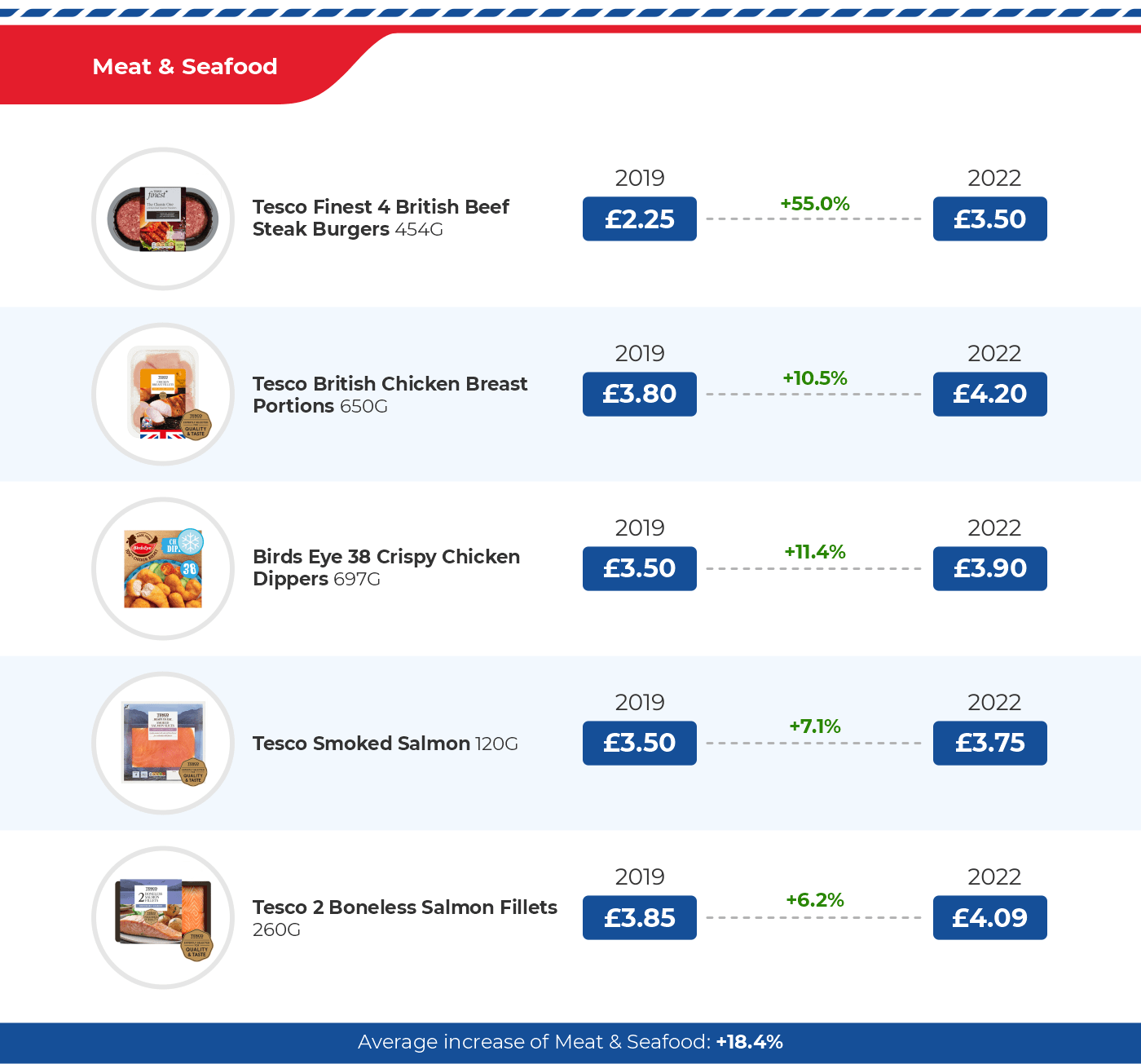
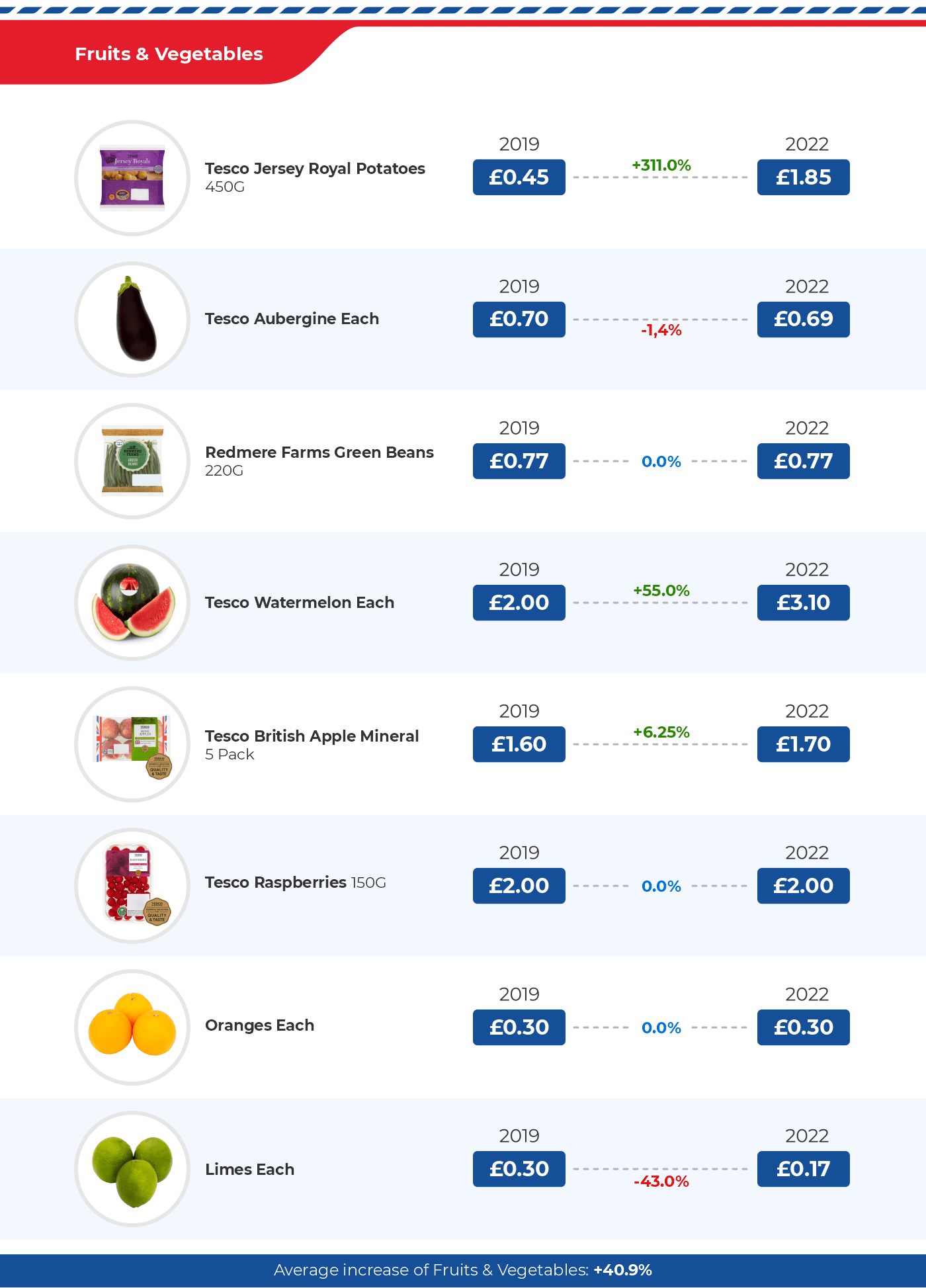
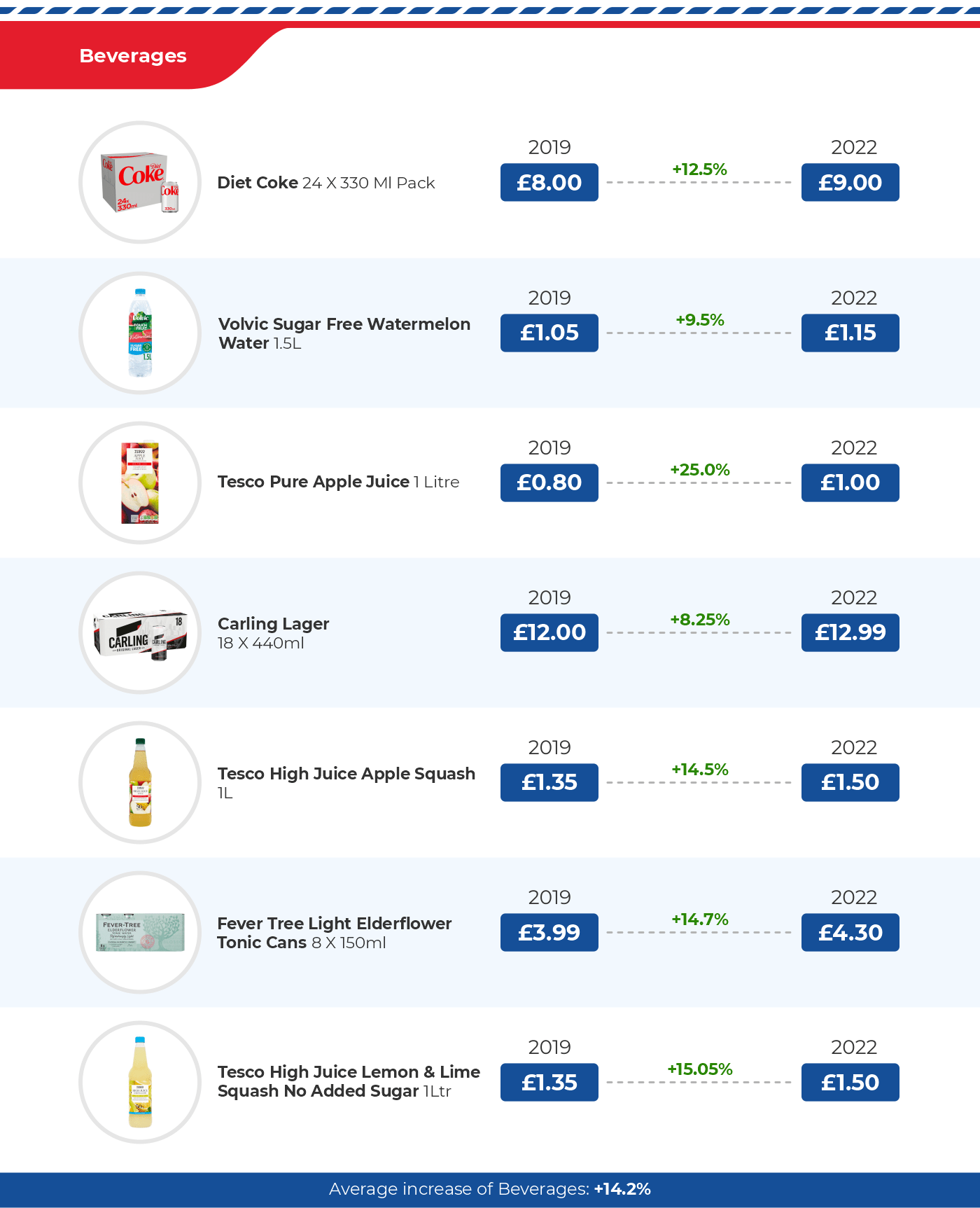
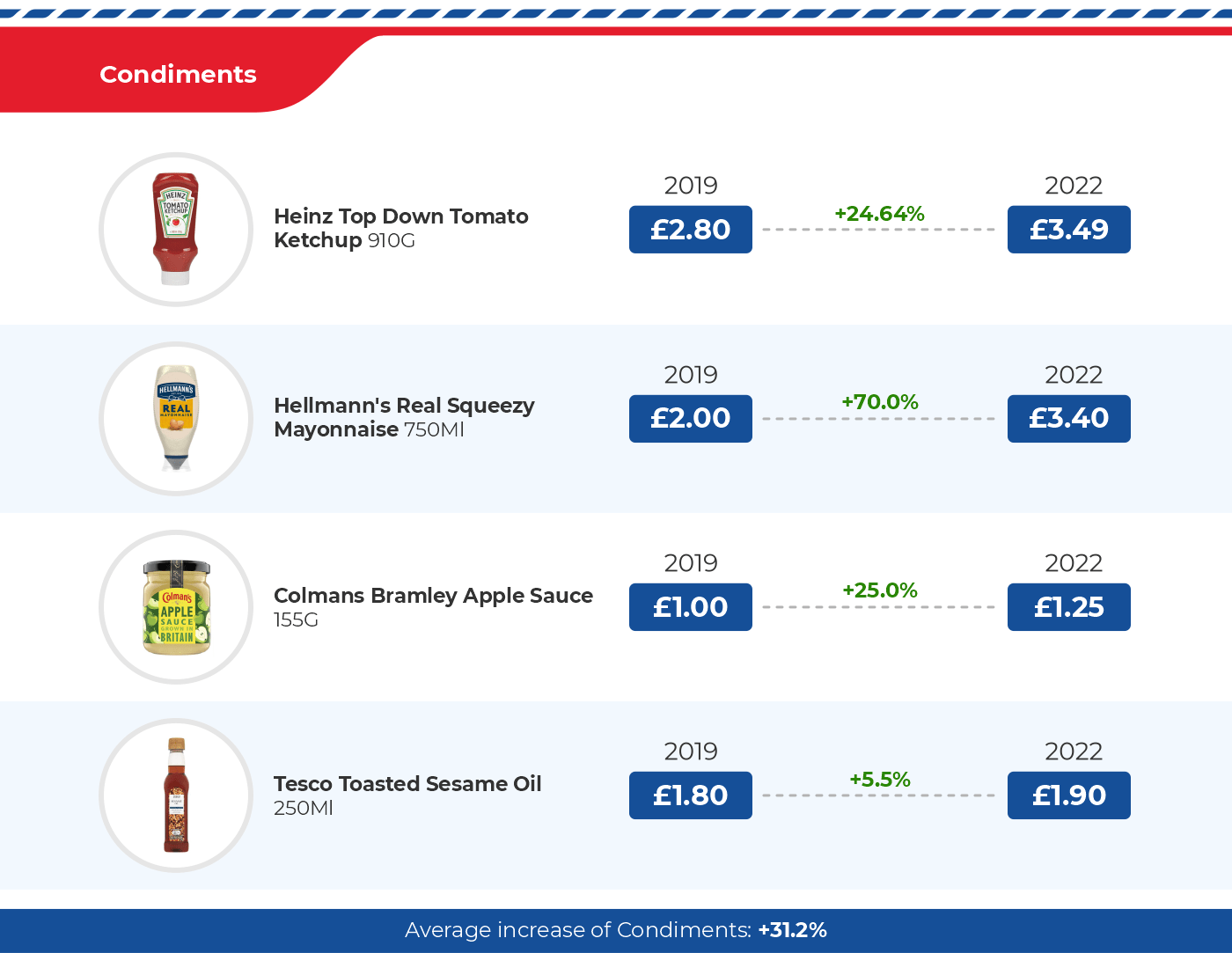
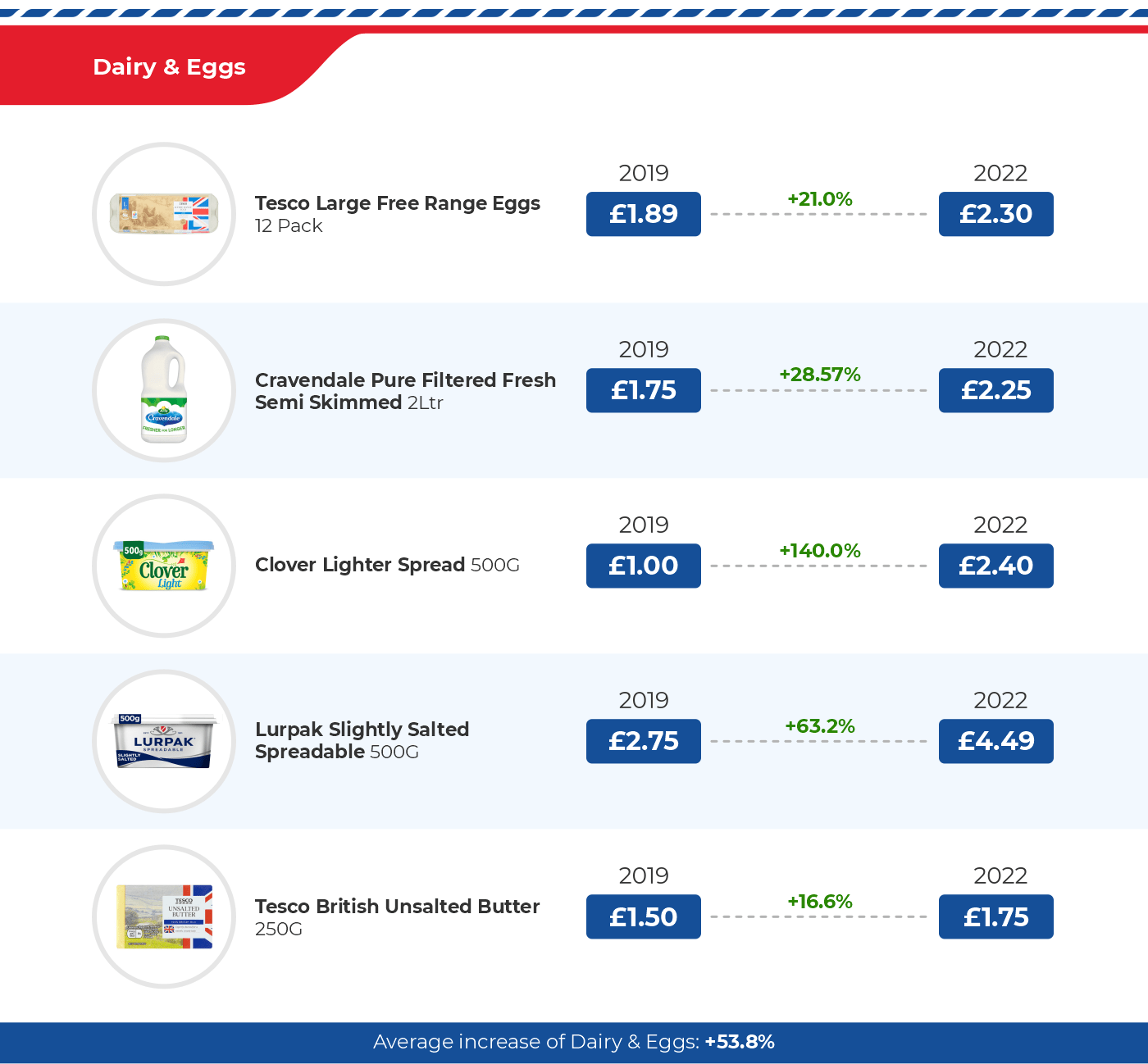
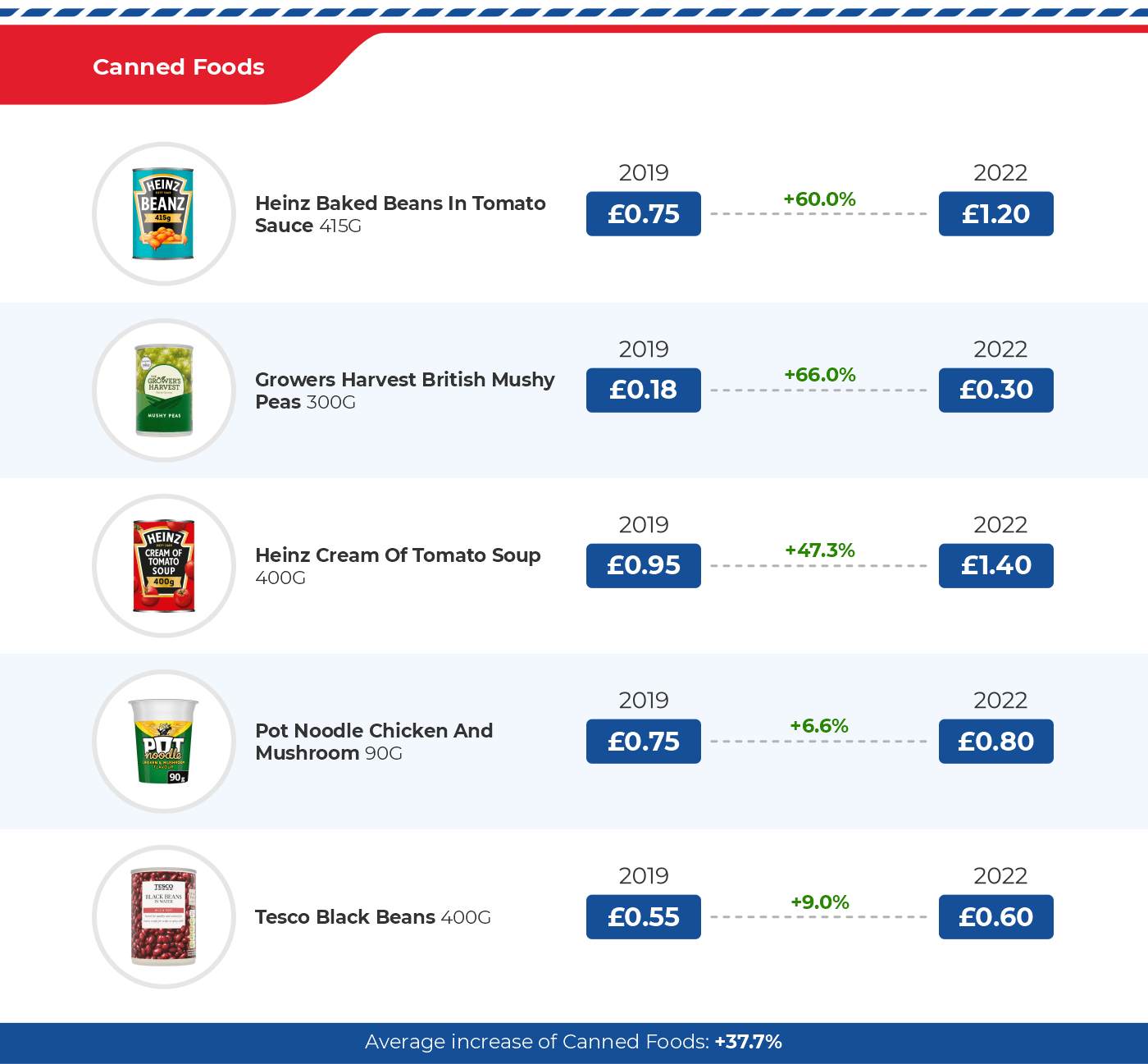
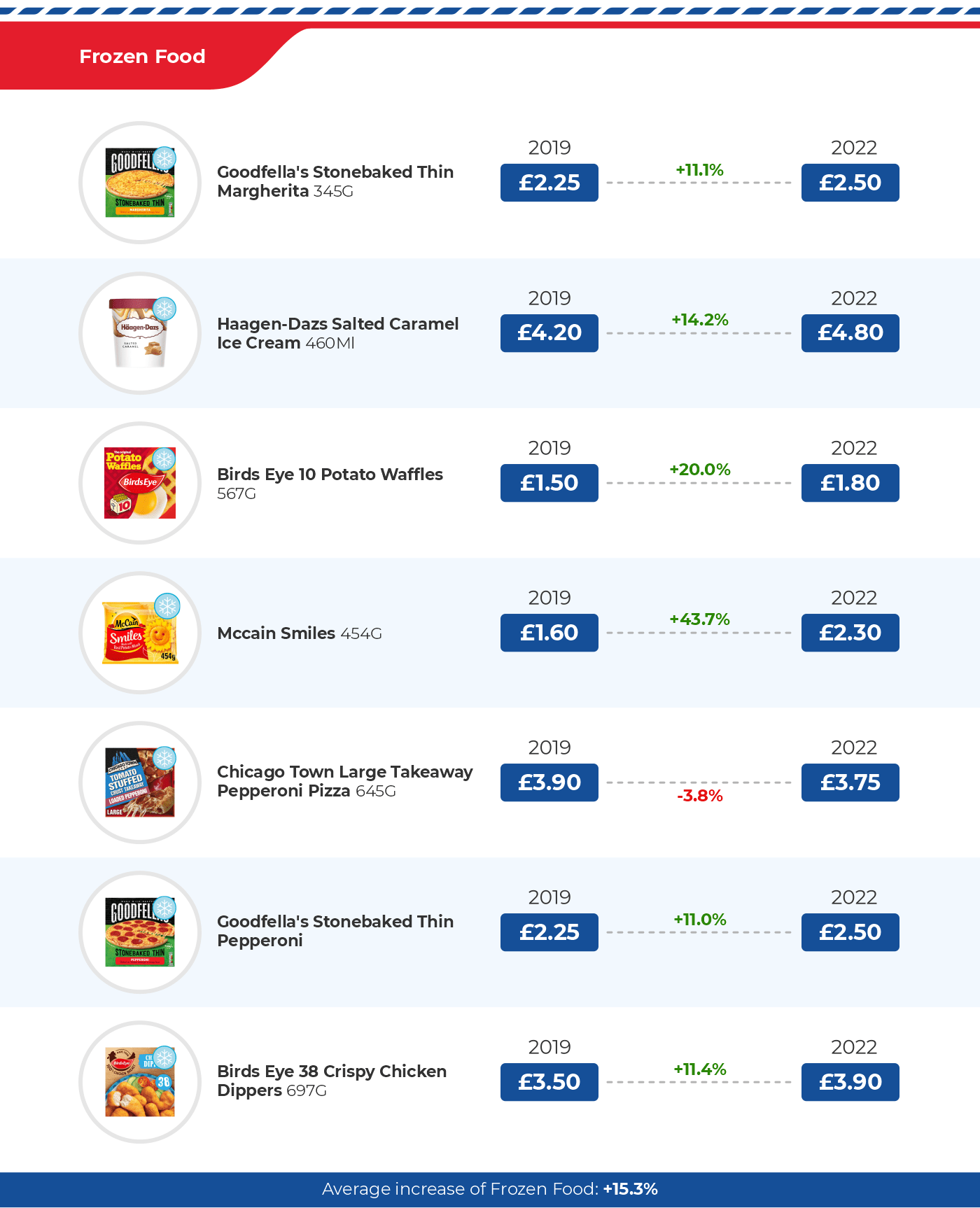
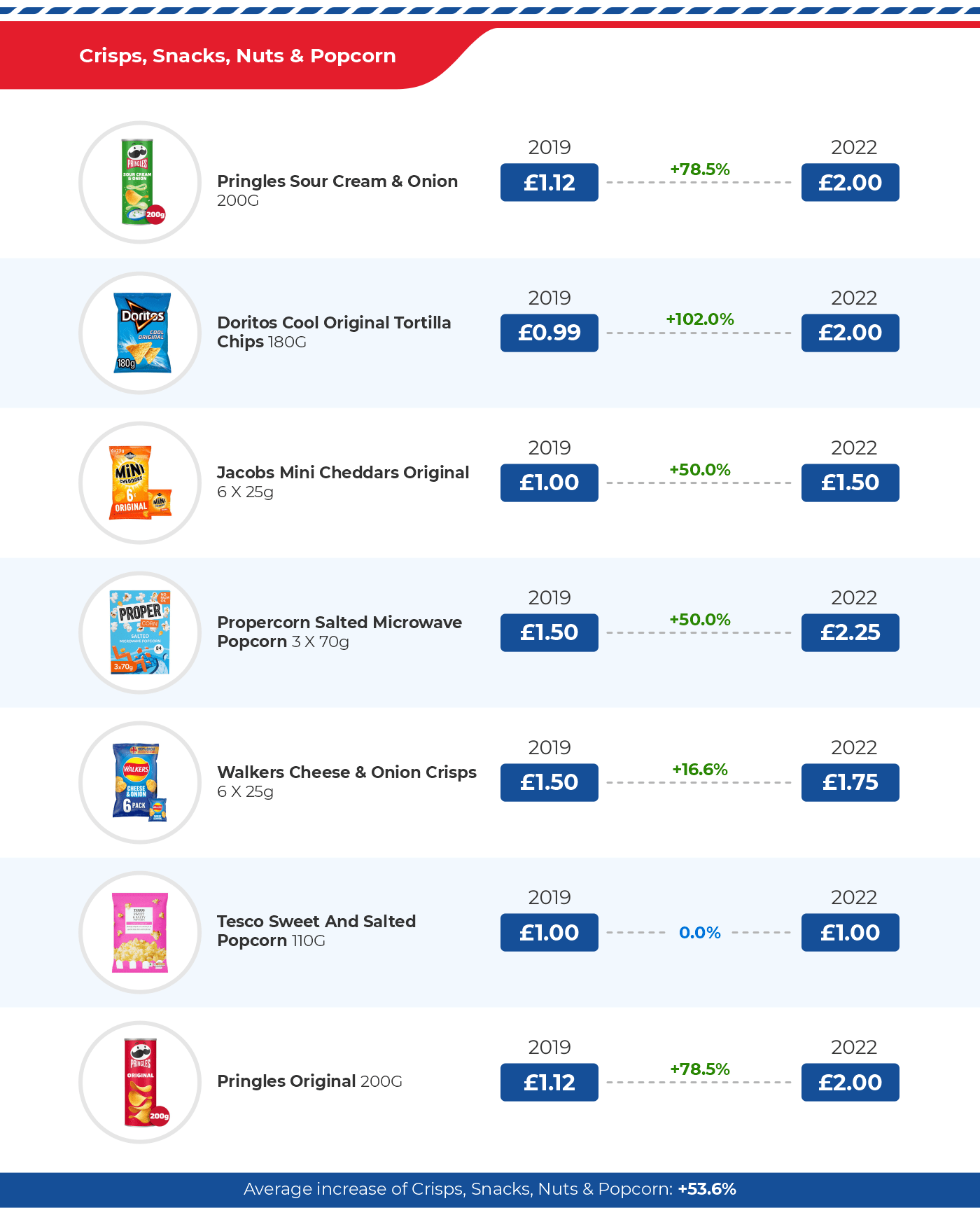

If a consumer had purchased all 55 grocery items subject to our analysis in August 2019, they would have cost £109.89. However, in August 2022, the total price of all products is £134.76, which is an increase of 22.63%.
On the other hand, according to the latest data by the UK’s Office for National Statistics, the average weekly earnings of all employees, including bonuses, increased by 13.57% from £538 to £611 between June 2019 and June 2022. Regular weekly pay (excluding bonuses) rose from £506 in June 2019 to £568 in June 2022, or a 12.25% increase.
We can see that consumers’ purchasing power for grocery shopping has decreased by roughly 9% to 10% over that three-year period.
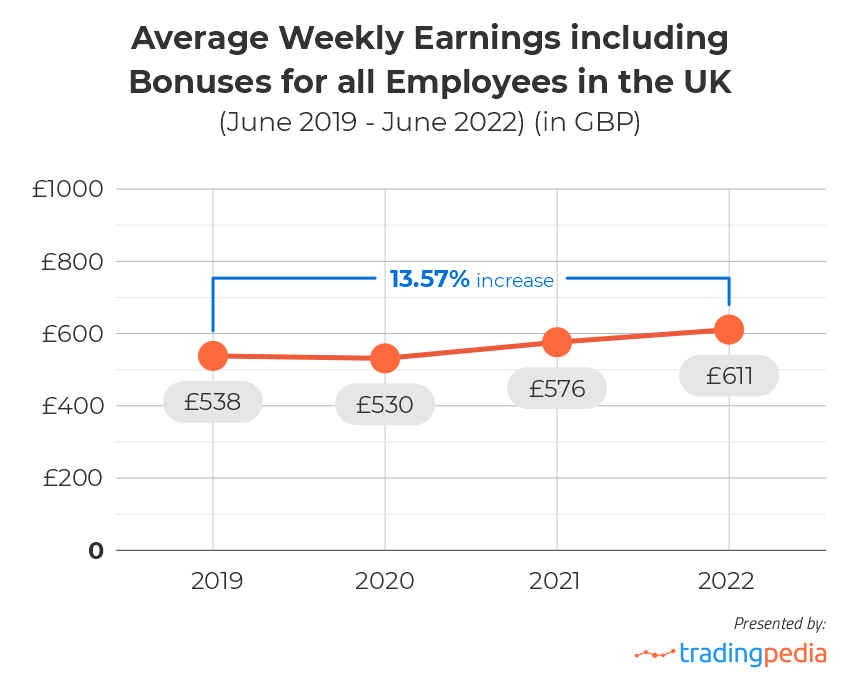
Citigroup analysts now forecast UK food price inflation to peak at around 20% in the first quarter of 2023, while producer price inflation to keep accelerating.
Meanwhile, the latest report by the Institute of Grocery Distribution projects a peak in food inflation at around 15% during this summer, while prices will likely remain high into 2023.
“Food price inflation is very likely to mount greater upward pressure on wage demands compared to other types of inflation. And that is quite a concern for Bank of England policy makers, because considerable wage increases may also drive overall inflation. Still, on a more positive note, Bank of England expects inflation to begin moderating in H1 of 2023 and ultimately return to its inflation target at some point during the second half of 2024”
– Michael Fisher analyst at TradingPedia pointed out.